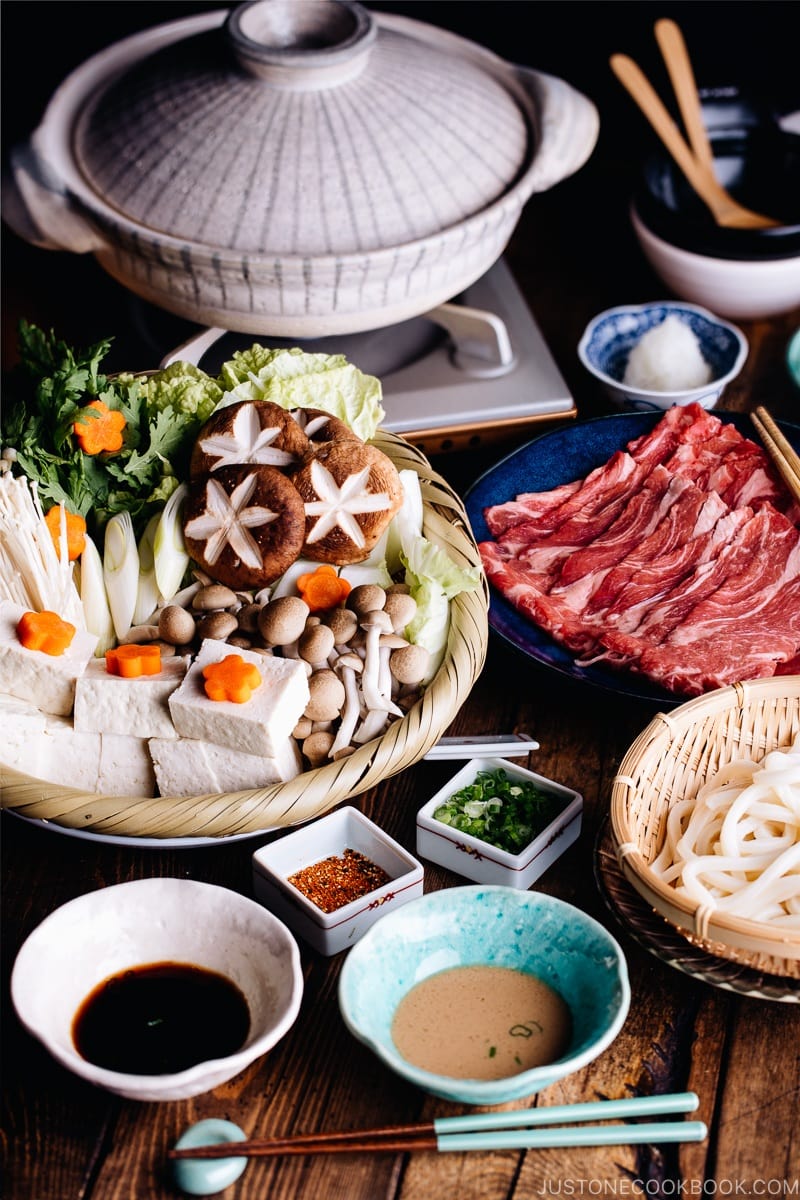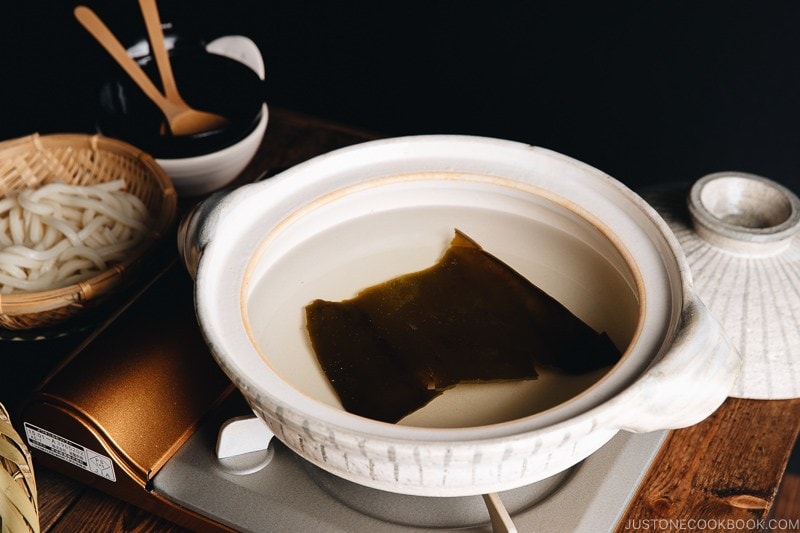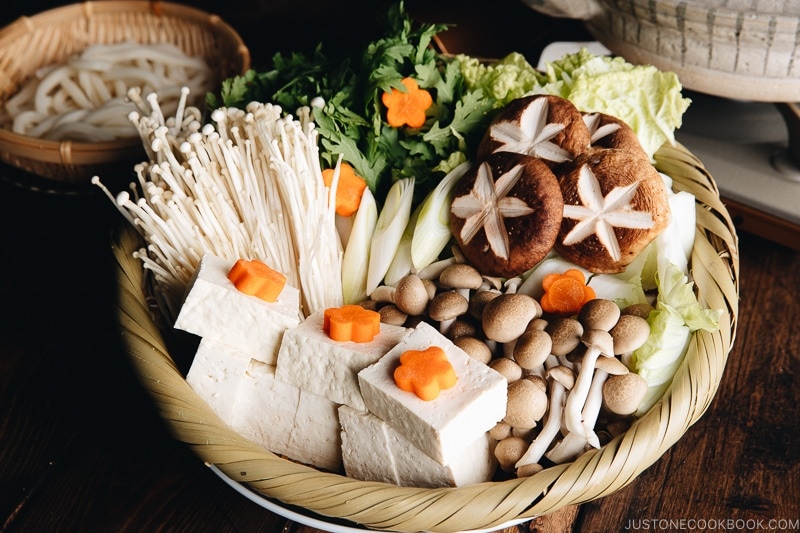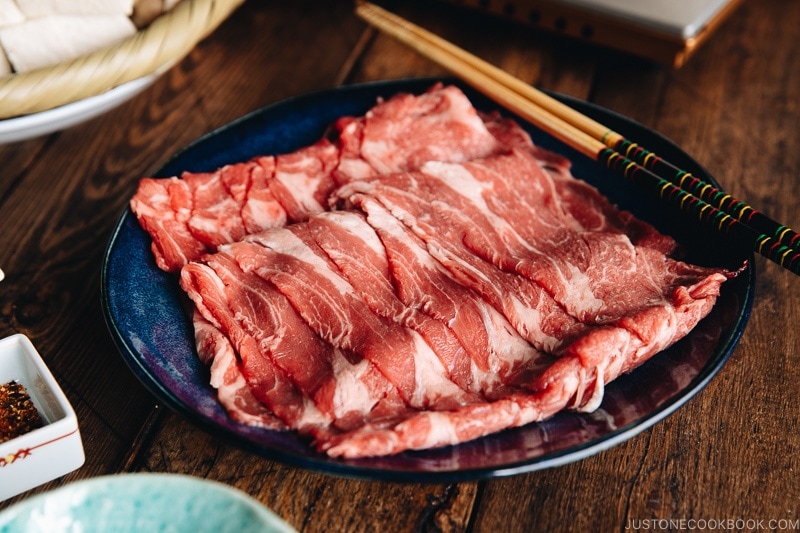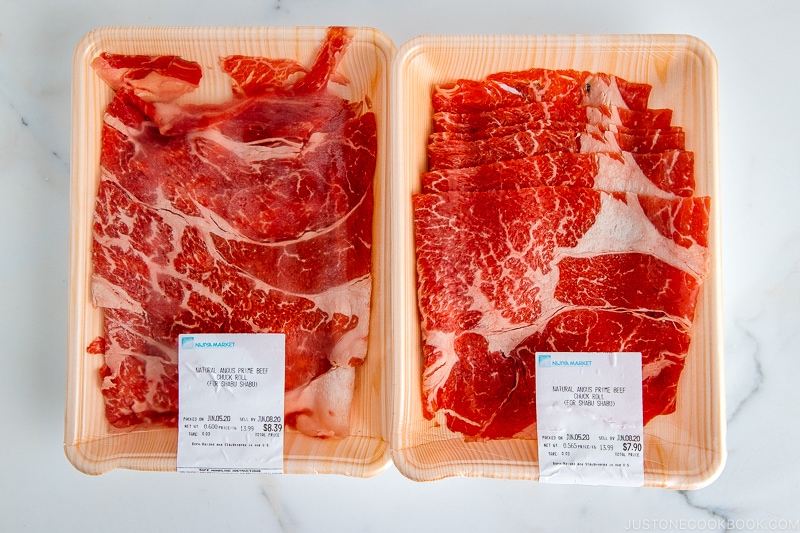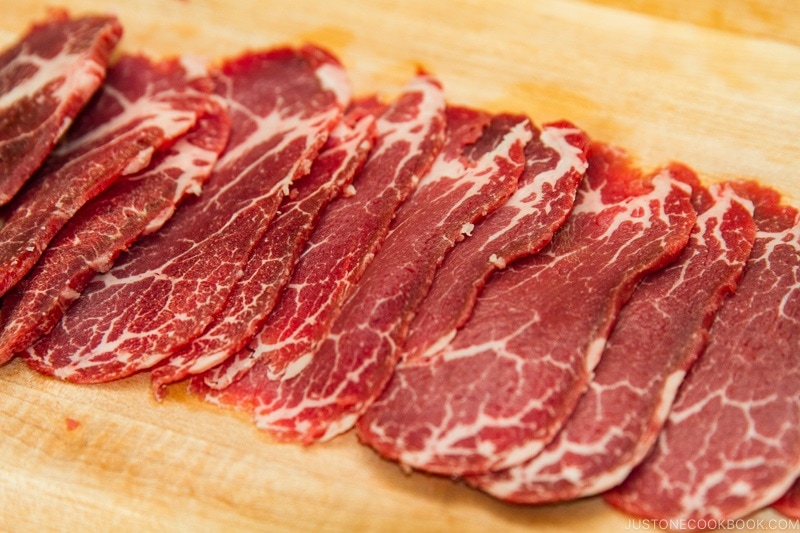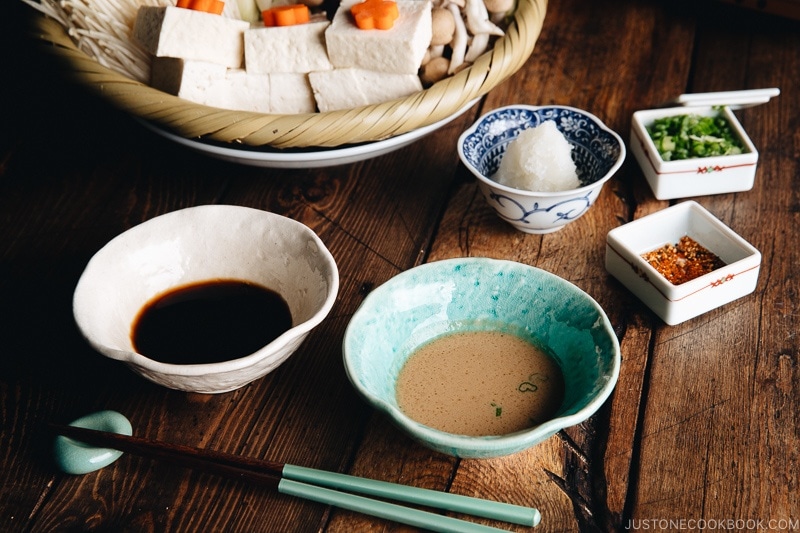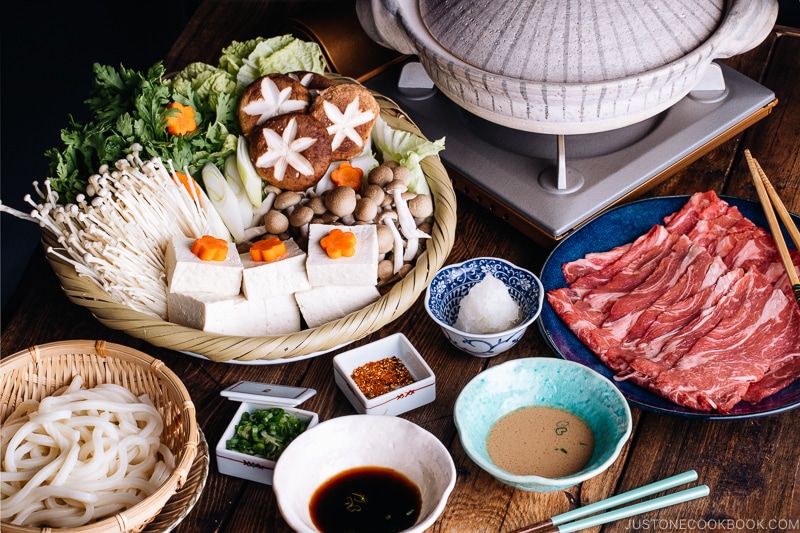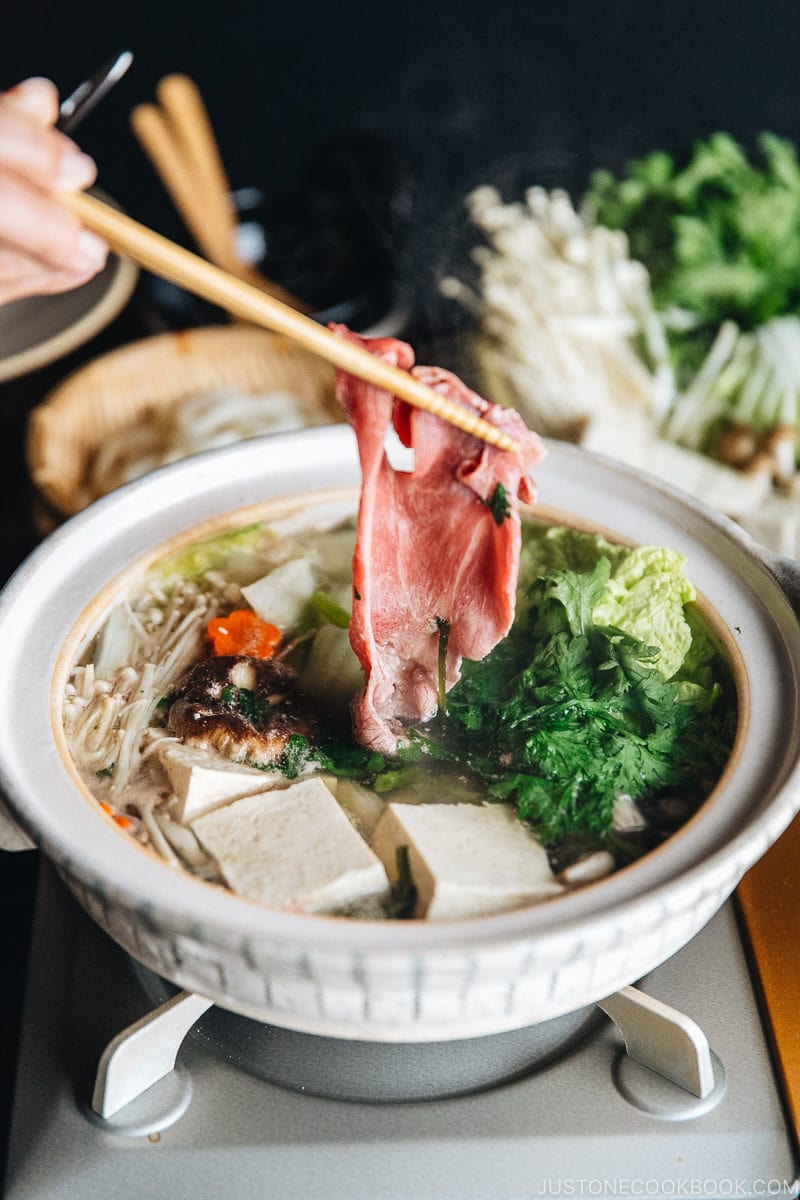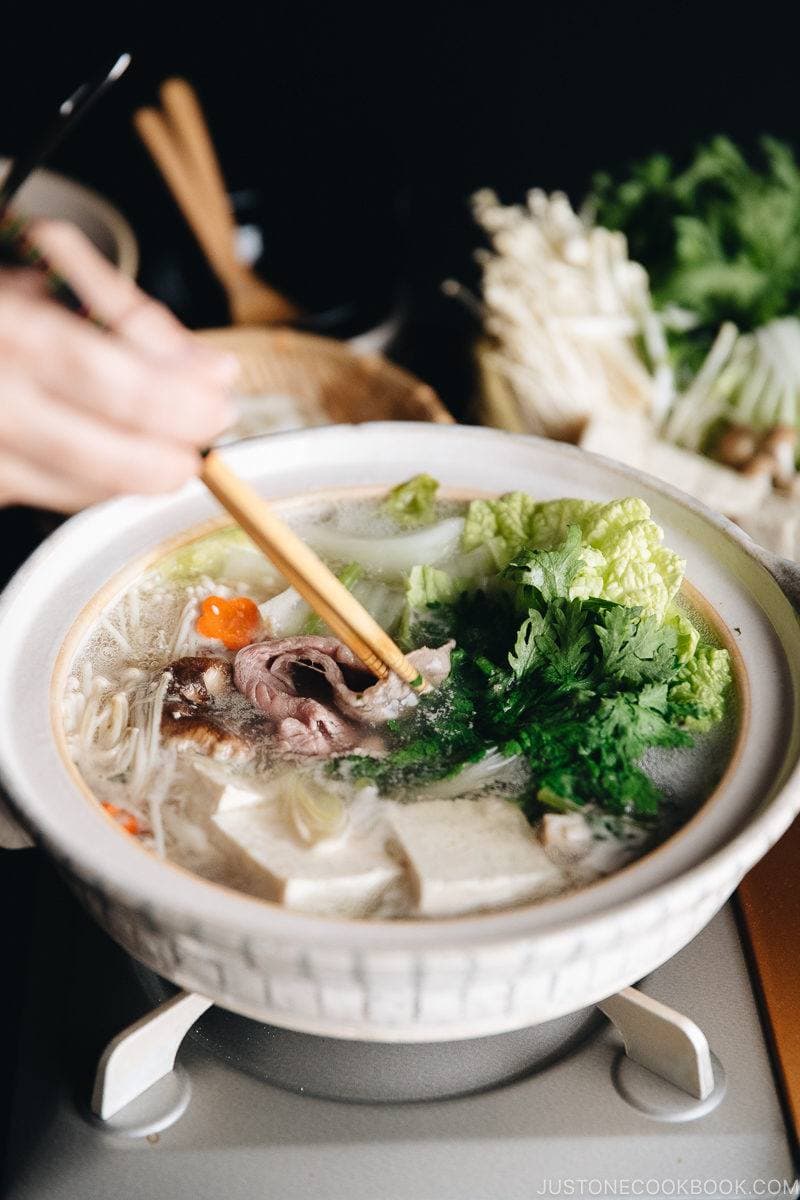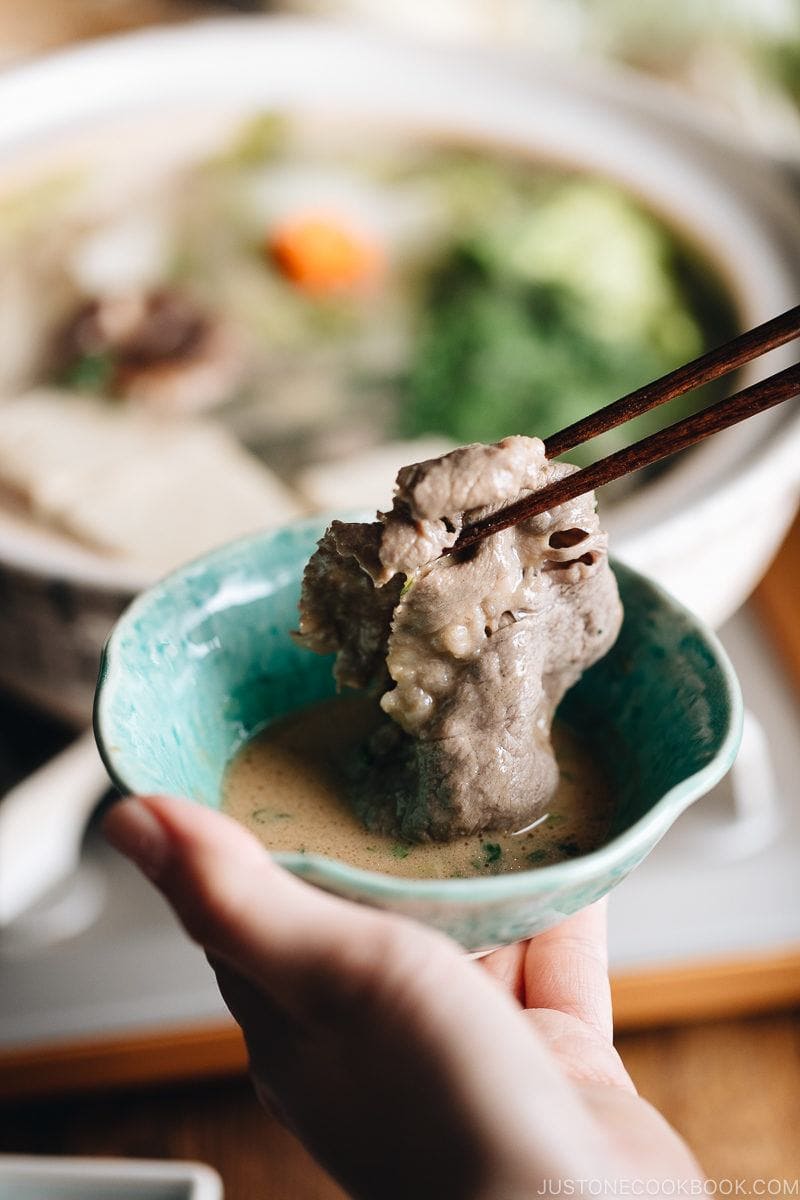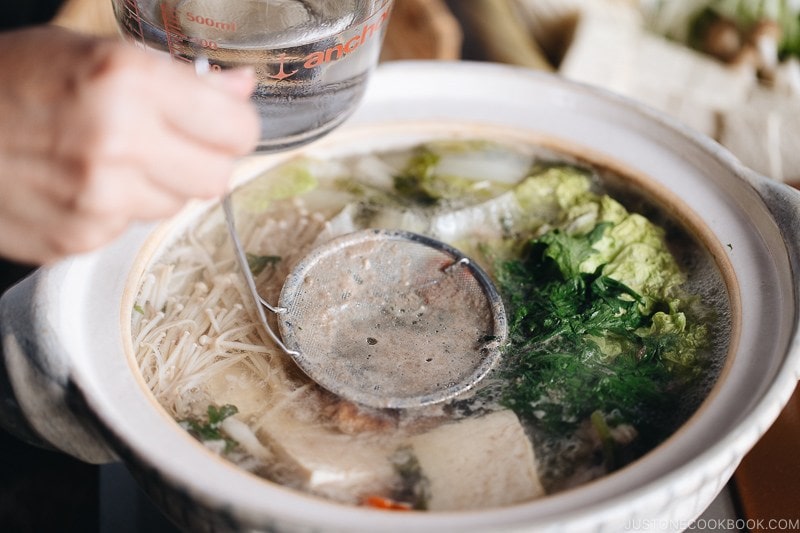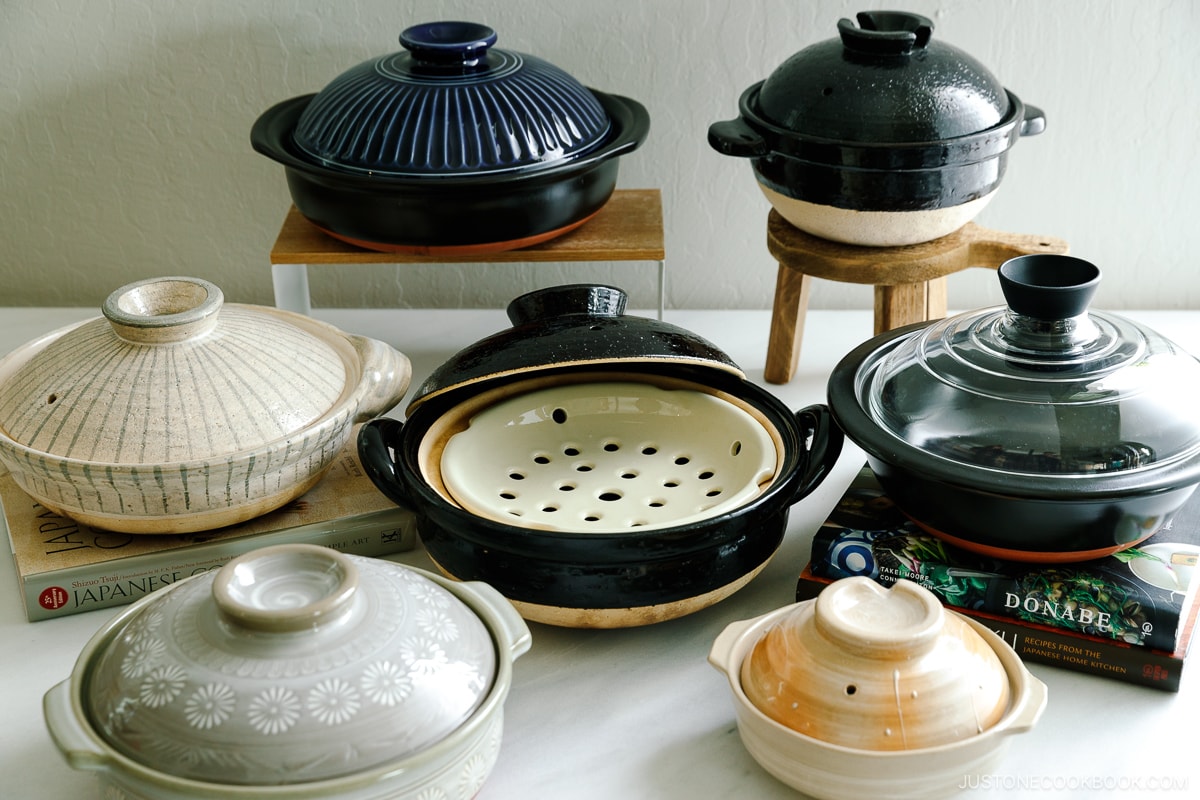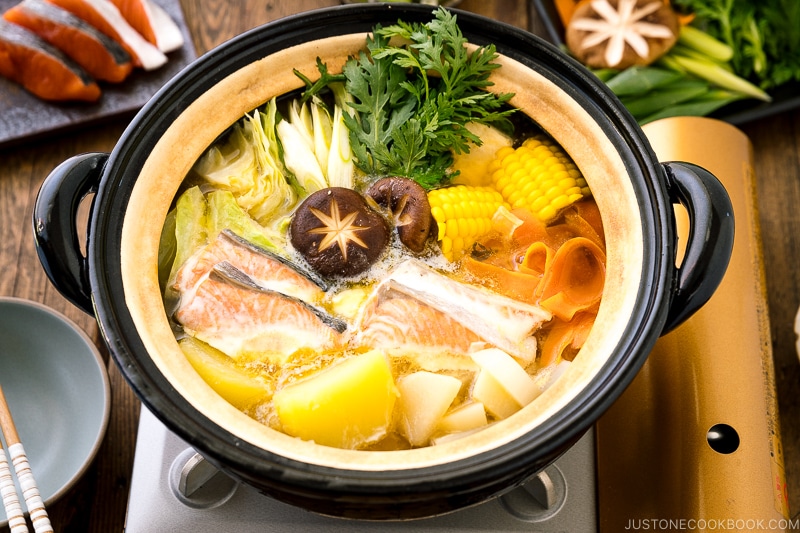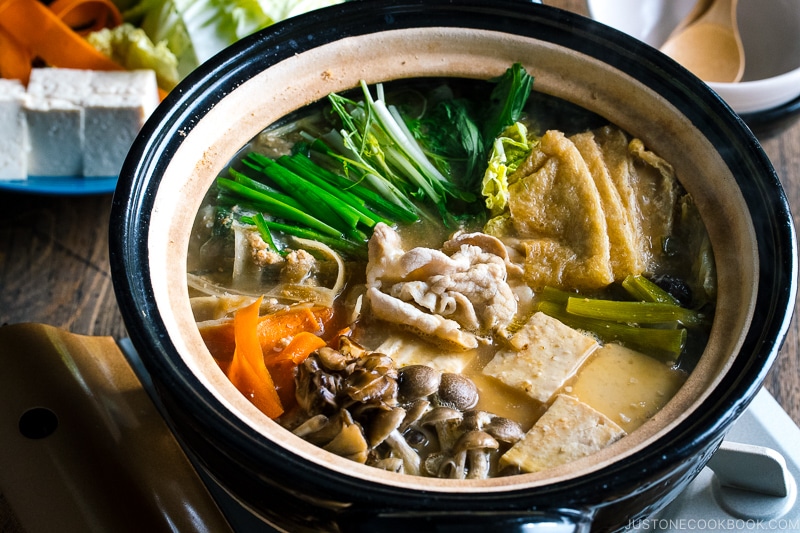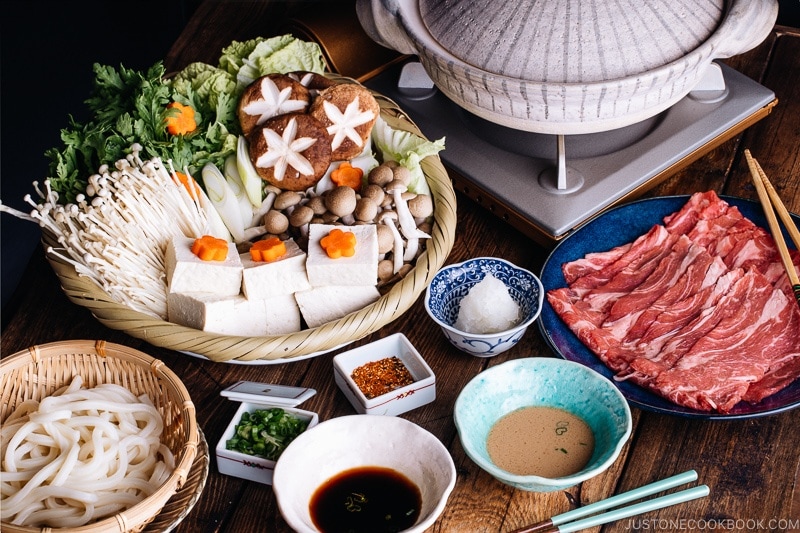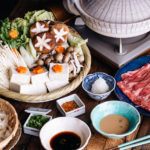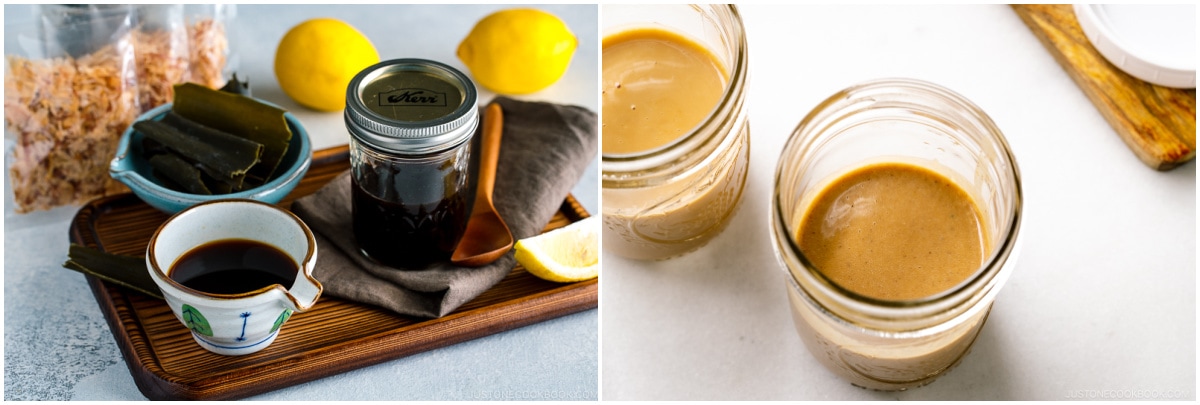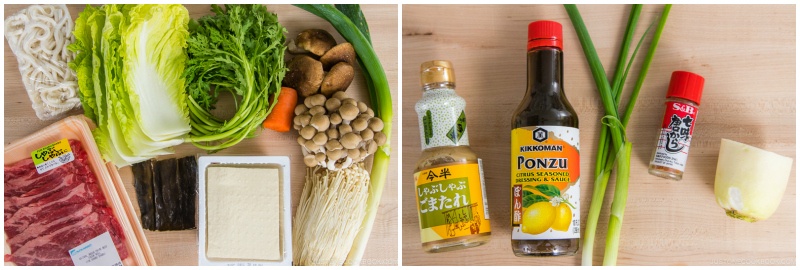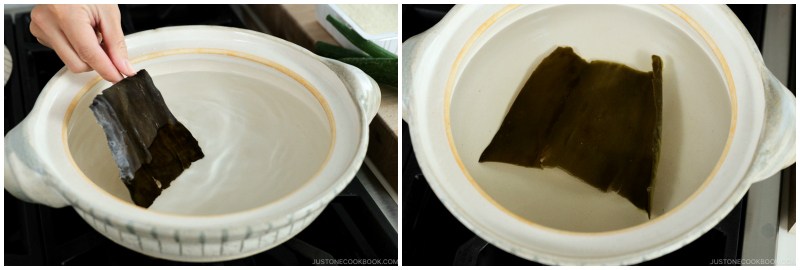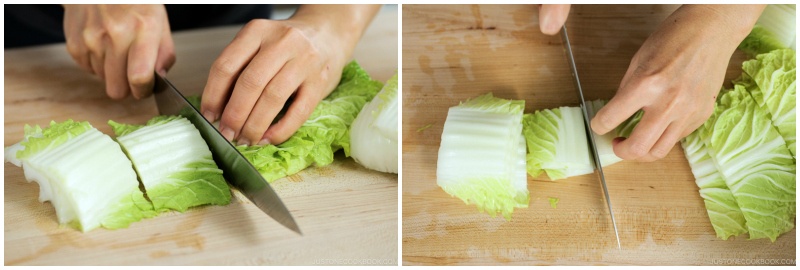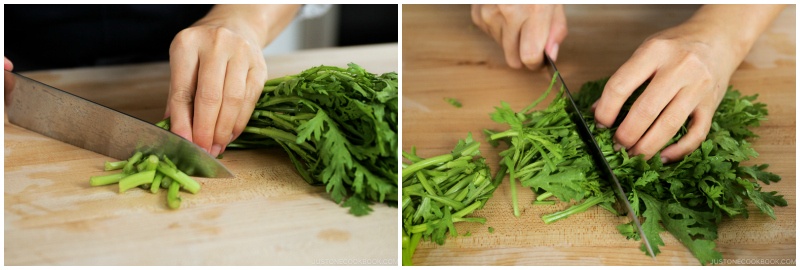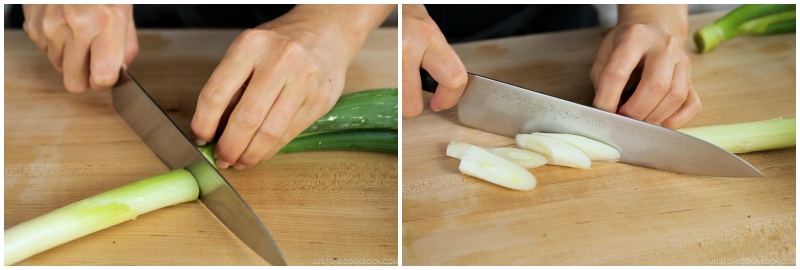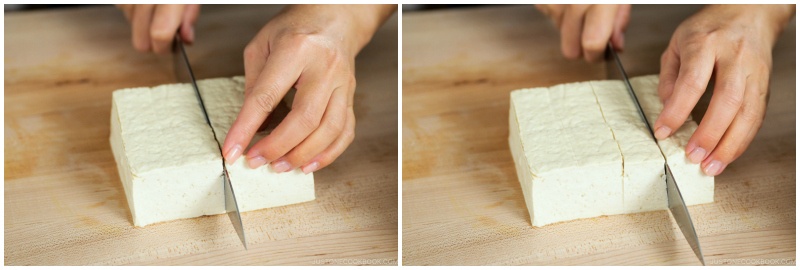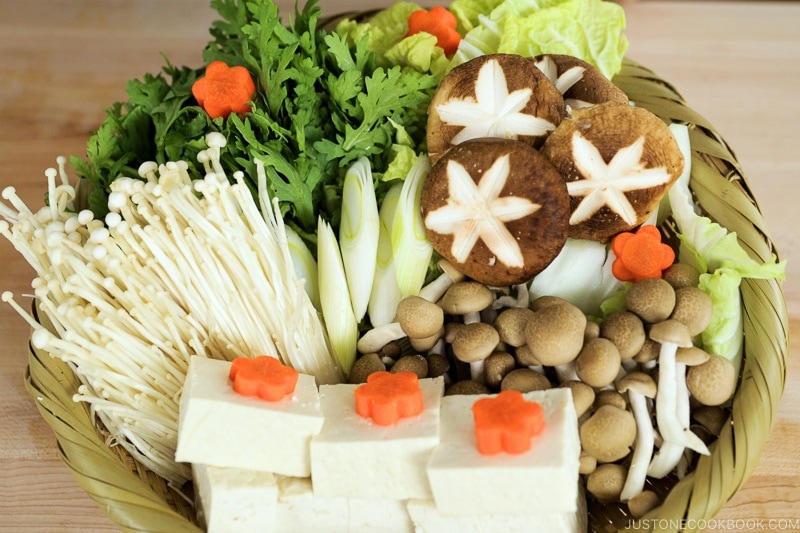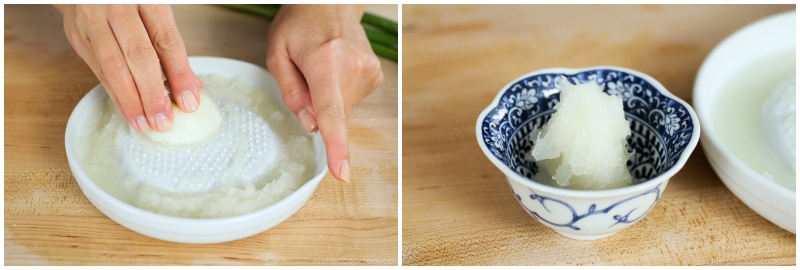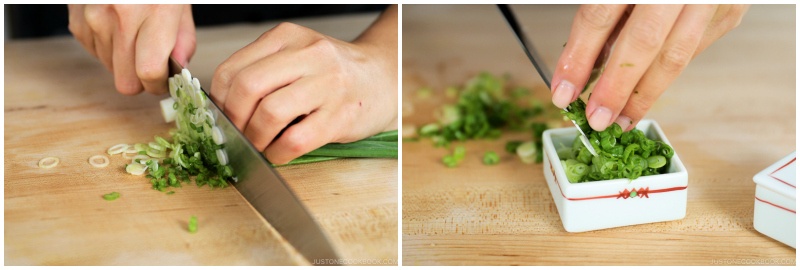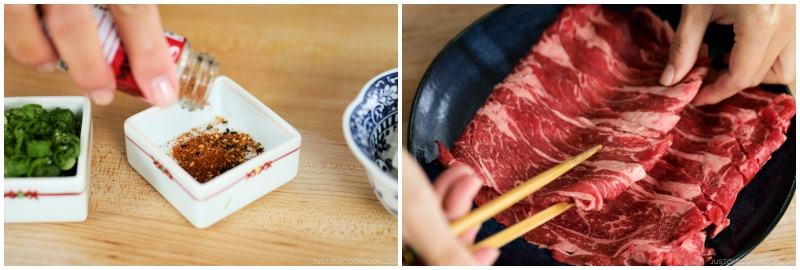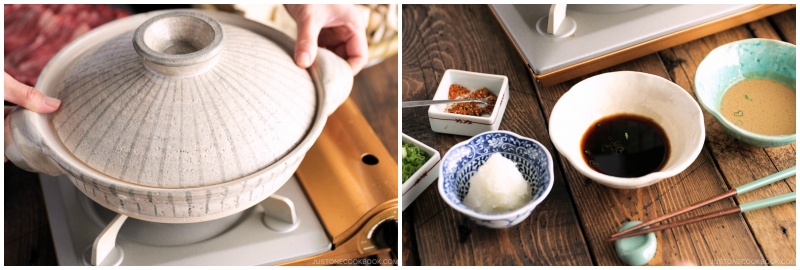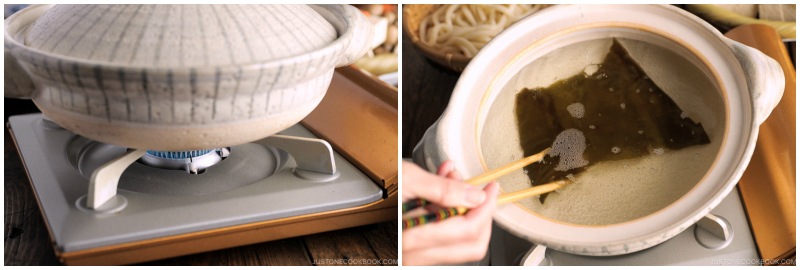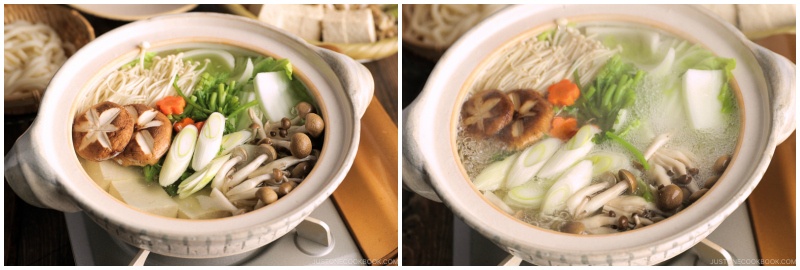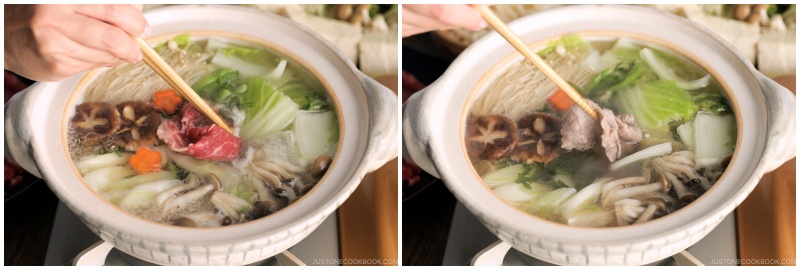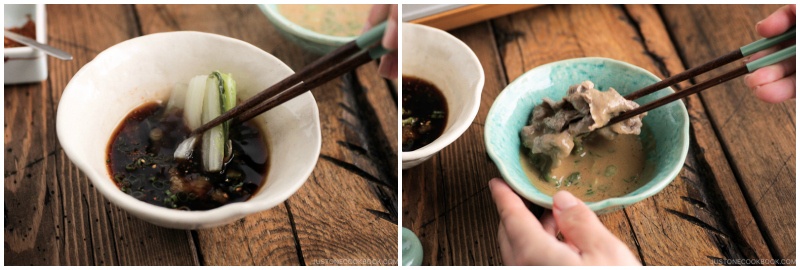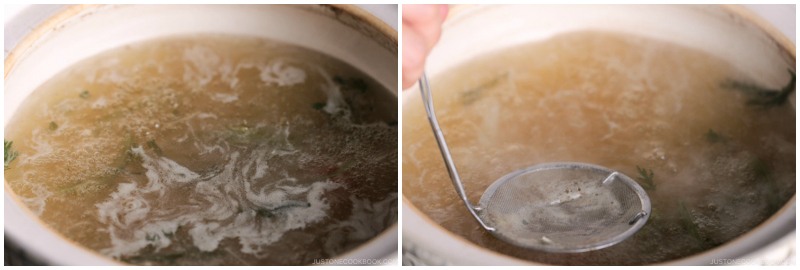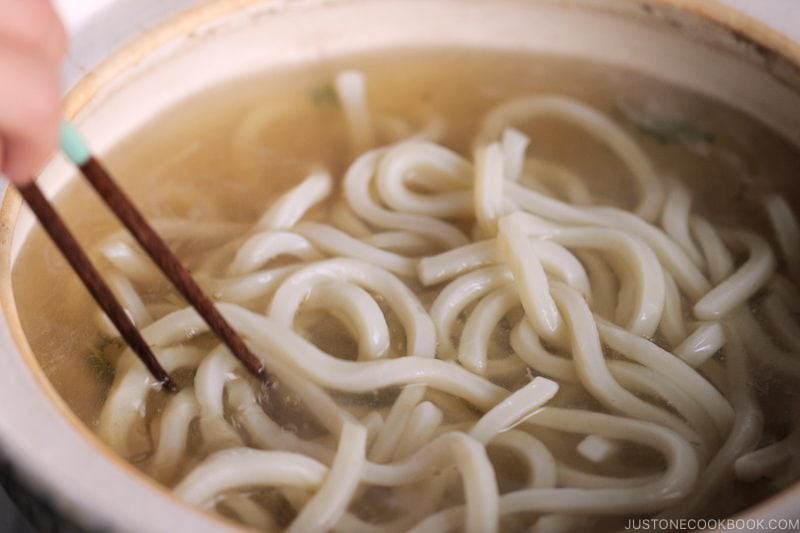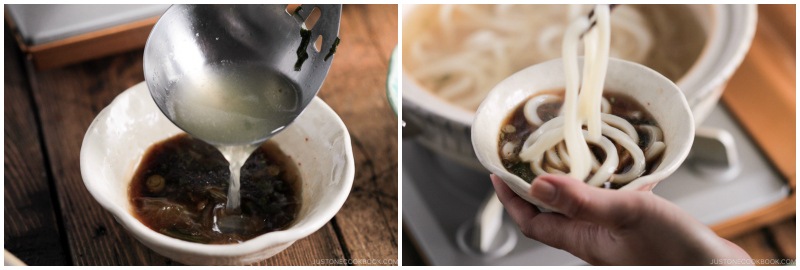What are some of your ultimate comfort foods that are celebratory yet easy enough to make? In my book, it has to be hot pot! There are many versions of hot pot dishes in Japan, and if you’re wondering where to start, I’d recommend Shabu Shabu (しゃぶしゃぶ). Not only is it the perfect warming meal to get you through cold days, but it’s also low-effort and great for a get-together. Now, let’s gather your family and friends and shabu shabu!
What is Shabu Shabu?
Shabu Shabu is one of Japan’s most famous hot pot dishes, along with Sukiyaki. The name “shabu shabu” is Japanese onomatopoeia. It came from the sound when you stir the vegetables and meat with your chopsticks and ‘swish-swish’ in the hot pot. It makes a super fun meal where everyone sits around the table, cooks together, and enjoys chatting while eating, much like fondue! A communal dining experience that not only inspires good appetites but also brings people closer together.
Shabu Shabu Ingredients
Shabu Shabu is so easy to make! You’ll need the following ingredients:
Kombu dashi for the hot pot stock Vegetables, mushrooms, tofu, and udon noodles Thinly sliced beef/pork Dipping sauces
Ingredients are pretty simple and you can get them from a Japanese supermarket or the majority of Asian grocery stores. Let’s talk more about them below.
1. Kombu Dashi
There are many different types of dashi (Japanese soup stock), but for shabu shabu, we use kombu dashi made with kombu (kelp). It is vegetarian and really easy to make. You can simply drop a piece of kombu in a pot of water and let it steep. That’s it!
2. Vegetables, Mushrooms, Tofu, and Udon
The most commonly used vegetables for shabu shabu are napa cabbage, chrysanthemum greens (shungiku), long green onion (negi), and carrot. You can also add other vegetables like cabbage, broccoli, zucchini, carrots, other leafy Asian greens, sweet corn (cut in sections), etc. However, it’s worth a trip to your nearest Asian grocery store for harder-to-find ingredients like shungiku and long green onion, which are usually available at Chinese and Korean grocery stores. As for napa cabbage, you may have luck finding it at major grocery stores like Walmart, Target, Whole Foods, etc. The Japanese mushrooms are often used in this recipe include shiitake, enoki, and shimeji mushrooms. You can also use other types of mushrooms, such as button mushrooms, to enjoy different textures. We always add medium/medium-firm tofu to shabu shabu. You should be able to find it at your local grocery store these days. Vegetarians? These are all you need to make shabu shabu for vegetarians. For a greater variety of ingredients, feel free to use a mixture of tofu, such as grilled tofu or tofu puffs. Udon noodle is optional but we often add them for some substance. When we finish all the ingredients, we add some udon noodles to the soup and enjoy them at the end.
3. Thinly Sliced Beef or Pork
The best part of shabu shabu is enjoying these thinly sliced marbled meats, which we cook briefly to add flavor to the broth. Typically, beef and pork are the most commonly served meats, but you can occasionally find chicken, seafood, and sometimes lamb being offered in some restaurants. The most noticeable difference in having shabu shabu outside of Japan is the quality of meat. It can be difficult to source the same quality meat in the US without paying a high price. Supermarkets in Japan offer great quality beef at a regular price, but we make it work! You can buy thinly sliced “shabu shabu” beef (or pork) from a Japanese or Asian supermarket near you. I highly recommend visiting a well-stocked Korean grocery store as their meet quality is pretty good. If there is no Asian grocery store near you, you probably won’t be able to find thinly sliced meat in your local grocery store. Therefore, you get good quality meat and slice the meat yourself with a sharp knife. It’s effortless to do, and here’s the tutorial.
4. Dipping Sauces
Don’t forget to prepare grated daikon, chopped green onions, and shichimi togarashi so you can add them to the ponzu sauce when you eat.
How to Make the Best Shabu Shabu
First, let’s set up the table. Your pot should be placed on a portable gas stove (and don’t forget to get gas canisters) in the center of the table. Here I use the earthenware pot called donabe (土鍋). Inside is a simple yet umami-packed kombu dashi. We arrange the uncooked ingredients on two large plates—one for thinly sliced well-marbled beef (and/or pork) and the other for vegetables, mushrooms, and tofu (with optional udon noodles). In addition to the ingredient platters, we provide each person with their own dipping sauces. I recommend providing each person a shallow bowl so you can let the food cool a little before eating. Once everyone is seated, start cooking dense vegetables (white parts of napa cabbage, long green onion, stems of chrysantmemum greens). I usually set a 10 minute timer and close the lid. Once boiling, reduce the heat to low and keep it simmer. After 10 minutes, add softer, leafy vegetables. When they are done cooking, pick up one slice of meat with the communal long cooking chopsticks and gently stir it in the broth for a few seconds. Paper-thin slices of meat take only a few seconds to cook. When the meat is done cooking, transfer it to your own bowl of dipping sauce. Pick a person who cooks the meat for everyone. This way, everyone gets meat at the same time. You can dip cooked vegetables, tofu, and meat in sesame or ponzu sauce. I love meat in sesame sauce and vegetables and tofu in ponzu sauce. You can continue to cook while you eat, using a set of communal chopsticks for cooking ingredients and serving. While cooking, skim scum and foam from the surface with a fine mesh skimmer to keep the stock clean. Once you‘ve cooked all the ingredients and removed them from the hot pot, cook udon noodles in the remaining broth and enjoy. If you dine at a shabu shabu restaurant, the staff will get you started by cooking a few ingredients first. Don’t hesitate to ask if you are unsure how to proceed. If you’re at home cooking up the hot pot, I hope this post will guide you through everything you need to know to enjoy your first shabu shabu experience.
Watch Shabu Shabu Recipe Video
Watch the video below to see how you prepare the ingredients and cook them at the table. Have fun making shabu shabu with your family and friends!
Use Donabe (Japanese Clay Pot) for Hot Pot
Shabu Shabu is typically cooked in a donabe (土鍋), an earthenware pot, on a portable gas stove with a gas canister at the table. You can also use a heavy-bottomed pot such as a Dutch oven. This traditional clay pot distributes heat and retains heat well, and it makes beautiful serveware for shabu shabu. If you are shopping for a donabe, please see my tips on how to choose the best donabe for you. Before you use your donabe for the first time, please learn how to season and care for your donabe.
Can I Use an Electric Hot Pot?
Healthy Hot Pot Recipes
As a busy mom, I make shabu shabu during the holidays and all year round. It’s a quick, easy, and healthy meal. I love that I don’t have to cook before dinner time. All I need to do is to cut the ingredients and let everyone cook dinner together at the table. Since we cook all the ingredients in broth, no oil is used in the hot pot. It’s a very low-fat meal and a great way to incorporate many vegetables. Happy swishing and enjoy shabu shabu all year round! To learn about Japanese Hot Pot, check out Nabemono: A Guide to Japanese Hot Pot, and here are some of my favorite hot pot recipes:
Sesame Miso Hot Pot (Goma Miso Nabe) Hokkaido Salmon Hot Pot (Ishikari Nabe) Monk Fish Hot Pot (Anko Nabe)
Wish to learn more about Japanese cooking? Sign up for our free newsletter to receive cooking tips & recipe updates! And stay in touch with me on Facebook, Pinterest, YouTube, and Instagram. Editor’s Note: This post was originally published on December 2, 2011. It was updated with a new video and new images in December 2018. It was republished with more helpful content on February 20, 2024.
